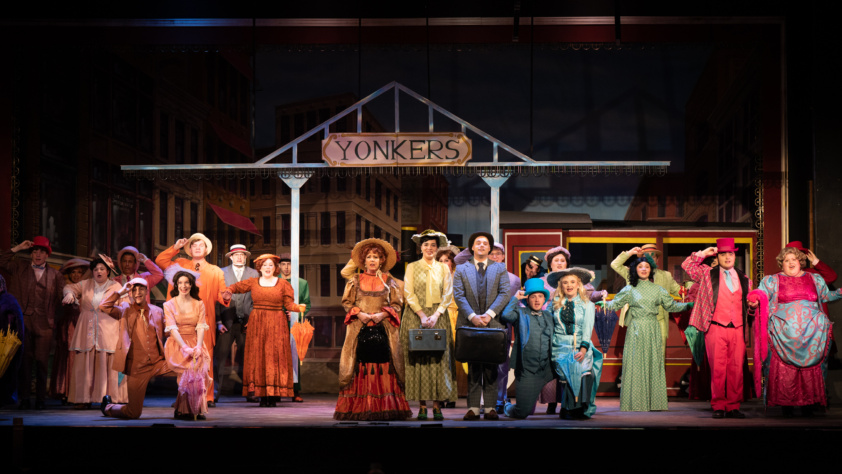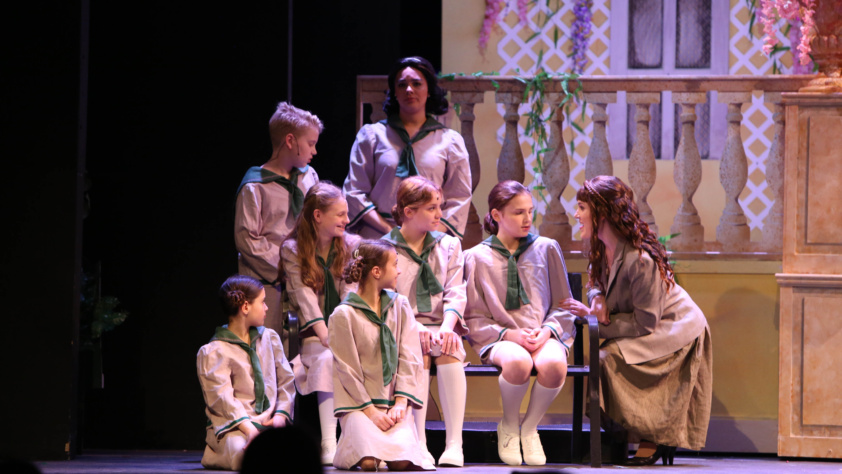By Sam Desmond
Breaking the fourth wall brought razor-sharp wit and probing commentary to “The Drowsy Chaperone,” performed at the Noel S. Ruiz theater in Oakdale for opening night on Saturday, Feb. 26.

“The Drowsy Chaperone” originally performed on Broadway in 2006 and debuted in 1998 at the Rivoli in Toronto. Nominated for multiple Broadway and West End theatre awards, it went on to win five Tony Awards and seven Drama Desk Awards.
The show has had major productions in Toronto, Los Angeles, New York, London, Melbourne and Japan, as well as two North American tours as well as Batemans Bay in southeastern Australia.
It was selected for the Noel S. Ruiz theater as part of their repertory for their celebration of their 35th year as a romantic jest at theater that belies the heart of a true patron.

“The Drowsy Chaperone” recreates the story of fictional 1928 musical “The Drowsy Chaperone,” with all its glamour and splendor inside the apartment of the Man in the Chair, an unnamed shut-in Broadway fan, all the while ironically commenting on the theater experience and life outside the walls of the unspecified building.
The apartment, where all the action takes place, was developed perfectly by stage manager Patrick Campbell and scenic designer John Mazzarella, as it took on a type of “Seinfeld”-esque generic Upper West Side feel: lived-in, meticulously kept, but somewhat overburdened with the fantasy of theater splattered all over the walls.
Matthew Surico, who played the Man in the Chair, brought a mid-Atlantic accent and an endearing awe of theater to coax the audience into his world. Surico, who recently directed “Man of La Mancha” in February at the Noel S. Ruiz theater, proved to have the acting chops that definitely came across in his direction.
The framed narrative, which explored the glitzy, sometimes outrageous, often banal theater of the old that was still coming off from Vaudeville tricks and incorporation of “talkies” into the mix, were all encapsulated in “The Drowsy Chaperone,” a tale of a famous Broadway star about to marry a man and settle into obscurity and the players surrounding the nuptials.
Emily Nadler, playing the Drowsy Chaperone, was superb, portraying her character like the Crawford/Davis divas who would’ve had begrudgingly had that role in latter renditions of the musical.
Her nonchalance to her charge was coupled with the amorous feelings towards Adolpho, a definitely un-woke Latin lover archetype deliciously played by Giovanni Marine in his debut, dressed like Big Edie from the HBO movie.
For the main couple of the production, Robert (played by Kevin Shaw) and Janet (played by Christina Corsaro), the chemistry was on point with a handsome, vain, and adorably bumbling groom who managed to rollerskate around a full stage with a blindfold (sheer) on, as his overly clever and comical finacée duped him with a dubious French accent.
Corsaro, in her role as the Broadway star, was luminous, and embodied the “it girl” at every turn, also carrying out the big bravado numbers of the part with grace and just the right amount of arrogance for the character.
With full company dance numbers, choreographer Ryan Nolin was able to bring the magic of the Jazz Age to the stage with a variety of disciplines.
In particular, a tap-dancing scene between Robert (Kevin Shaw), Bryan Bowie (George), and Brian Frank (Underling) was elegantly choreographed and reminiscent of old Astaire routines in its timing and landings.
Kitty (played by Emily Sarra) could have easily been a stock character of the ditzy blonde, but Sarra played her with such charm and a perfect New York accent that could’ve been on “Boardwalk Empire” alongside Lucy Danzinger, that she stole multiple scenes and even managed to make her crooning both impressive and jarring at the same time, which fully actualized the character.

Rounding out the trio of New York accents were John Mazzarella and Jordan Yates, the flotsam and jetsam of the production, whose synchronized moves and excellent dialogue pacing gave the menacing pastry chefs/gangsters street cred.
Director Jordan Hue and stage manager Patrick Campbell brought a dazzling vision of what the theater represents—escape, drama, fun, laughs—to a contemporary audience by highlighting the magic of the past.





